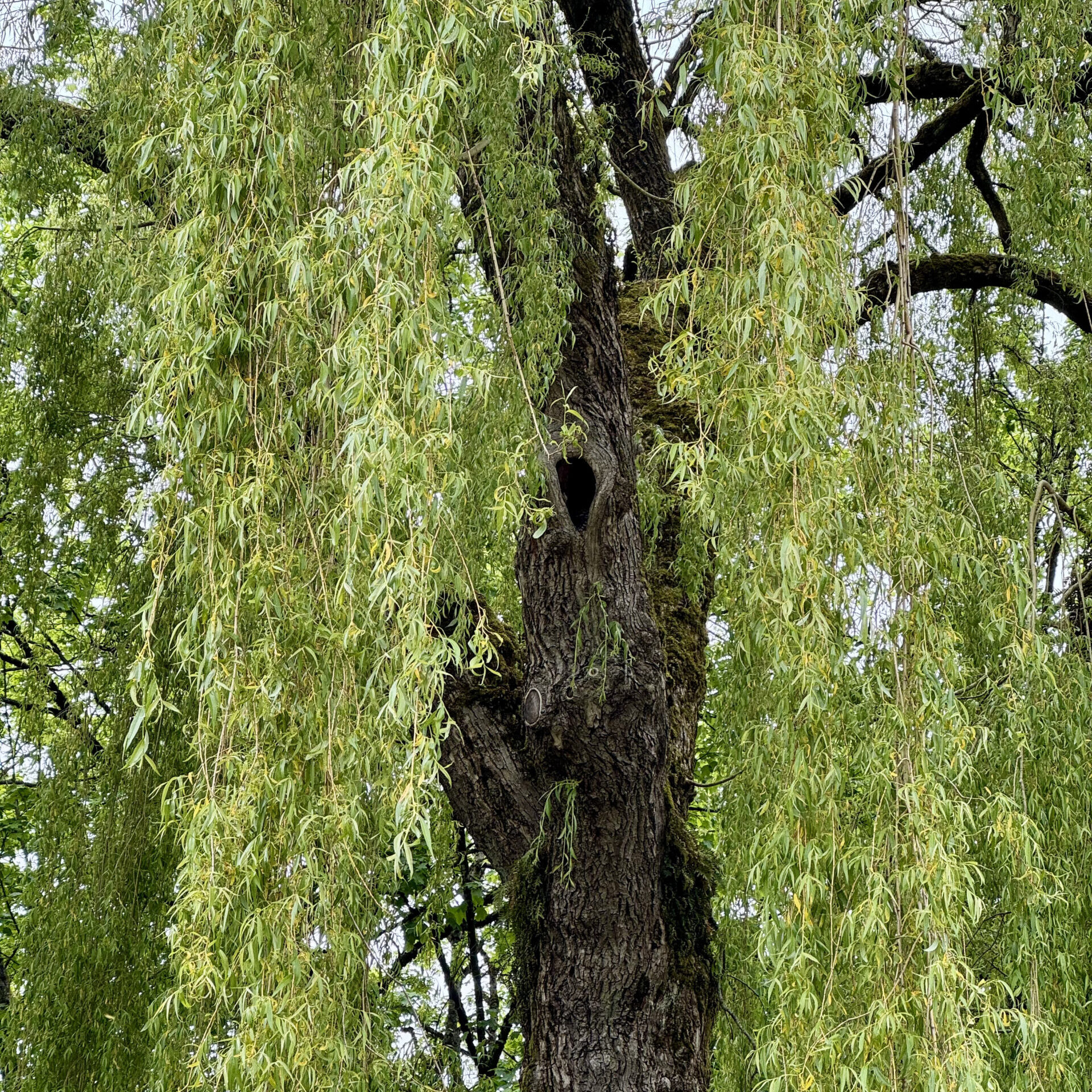The nesting Barred owls at Vancouver’s Douglas Park (801 W. 22nd Ave.) have been making headlines over the past couple of weeks for drawing dozens upon dozens of visitors to the neighbourhood park, situated in the heart of Cambie Village. What started as a couple of neighbours and birders stopping to admire the birds in mid-April has turned into an outpouring of spectators over a month later. In fact, the City of Vancouver has put up cautionary signs due to the influx of park-goers.
“Shhhh… owls are nesting,” reads the signage. “It’s really cool to see them up close, but they need space. To help the owl family succeed, you can: take a quick look from outside the fencing and then move on, keeping dogs on a leash and remaining quiet. This quiet spot is why the owls chose this special tree.”
The signage also provides some background on the Barred owl species. Native to eastern Canada and found throughout B.C., the birds have adapted to live in cities, surviving on a diet of songbirds and rats.
According to the City of Vancouver, they like to nest in cavities or abandoned nests from other birds, and their babies will officially leave their nests in the summer.
The Douglas Park owlets are typically nestled inside the large willow tree at the north-east end of the park, especially as they grow. However, I have spotted them tucked away in neighbouring trees during my evening walks as they wake from their daytime slumber.

Owl-viewing etiquette
According to Kevin Slagboom of Birding B.C., Barred owl nesting season commences in early March and lasts until mid-July.
“Of our regional owl species, the Barred owl can better adapt to urban environments,” he explains. “My advice when I teach people about wildlife viewing is to ‘act like a cow,’ taking short looks and glances before turning away. Basically, saying with your body language that ‘I am not a threat, I am just grazing and uninterested.’”
In this way, owl-spotting hopefuls can still admire the nesting birds from a safe distance without stressing them out.
“A person who points, maintains a gaze with or without optical equipment, and actively sneaks closer while maintaining eye contact can be perceived as a predator in the bird’s mind,” Slagboom warns. “When a bird is on high alert, it may not feed itself or its babies, rest, and may even be distracted from seeing a real predator.”
As stress has the potential to kill any animal, it’s important to keep this in mind while viewing wildlife in general, whether in the wild or an urban environment.
Signs of a relaxed owl versus a stressed owl
The International Owl Center adds that every nesting owl’s situation is unique, and learning to read the owl’s behaviour can help people understand what is acceptable to them and what is harmful.
The centre says that signs of a relaxed owl include lowered (but not flat) ear tufts, head feathers not contracted or expanded, and slightly lowered upper eyelids.
“It’s a compliment if the owl is ignoring you. If an owl is rapidly looking around away from you, however, it may be stressed and preparing to fly away.”
The ultimate flex, however, is if an owl is comfortable enough to sleep in your presence.
“Relaxed owls will normally have their top eyelid slightly lowered, just like humans. When their eyes are totally round, they are hyper-alert and focused on something. Make sure you aren’t the focus of their attention.”
Other signs of a stressed-out owl include rapid or deliberate eye blinking, small pupils, frequent head movement, and posture changes that compress the head and/or body.
The centre’s major owl-viewing pointers are pretty straightforward. Keep your distance, don’t feed them, limit your viewing time, move slowly, keep your voice down, and leave your dog at home. Stick to these fundamental guidelines, and you’re sure to spot the adorable owl clan on your next visit to Douglas Park without disturbing them.
Recent Posts:
There’s a ‘hidden’ Vancouver Island gem with rich tide pools less than 20 minutes from Nanaimo
One of the best views of the city awaits at this tiny Vancouver park














